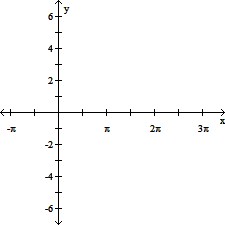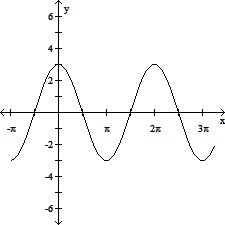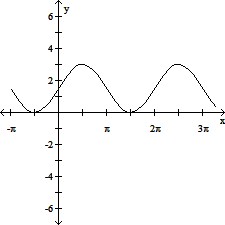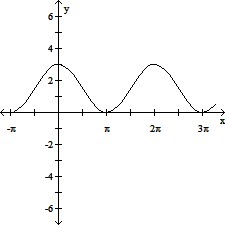Find all the local maxima, local minima, and saddle points of the function.
A. f(0, 0) = -671, saddle point; f(5, 6) = 0, saddle point; f(5, -6) = 0, saddle point;
f(-5, 6) = 0, saddle point; f(-5, -6) = 0, saddle point
B. f(0, 6) = 625, local maximum; f(0, -6) = 625, local maximum; f(5, 0) = -1296, local minimum;
f(-5, 0) = -1296, local minimum
C. f(0, 0) = -671, saddle point; f(0, 6) = 625, local maximum; f(5, 0) = -1296, local minimum
D. f(0, 0) = -671, saddle point; f(0, 6) = 625, local maximum; f(0, -6) = 625, local maximum;
f(5, 0) = -1296, local minimum; f(5, 6) = 0, saddle point; f(5, -6) = 0, saddle point;
f(-5, 0) = -1296, local minimum; f(-5, 6) = 0, saddle point; f(-5, -6) = 0, saddle point
Answer: D
You might also like to view...
Determine the amplitude and range of the function and sketch its graph.y = 3 sin x
A. amplitude: 3; range: [-3, 3]
B. amplitude: 3; range: [0, 3]
C. amplitude: 3; range: [-3, 3]
D. amplitude: 3; range: [0, 3]
Find the magnitude  and direction angle ?, to the nearest tenth of a degree, for the given vector v. v = -5i + 12j
and direction angle ?, to the nearest tenth of a degree, for the given vector v. v = -5i + 12j
A. 15; 112.6° B. 13; 67.4° C. 13; 112.6° D. 13; 157.4°
Write the following in terms of sin ? and cos ? and then simplify if possible.
?

A.
B. ?
C. ?
D. ?
E. ?
Insert either < or > to make the statement true.-  _____ -
_____ - 
A. > B. <




